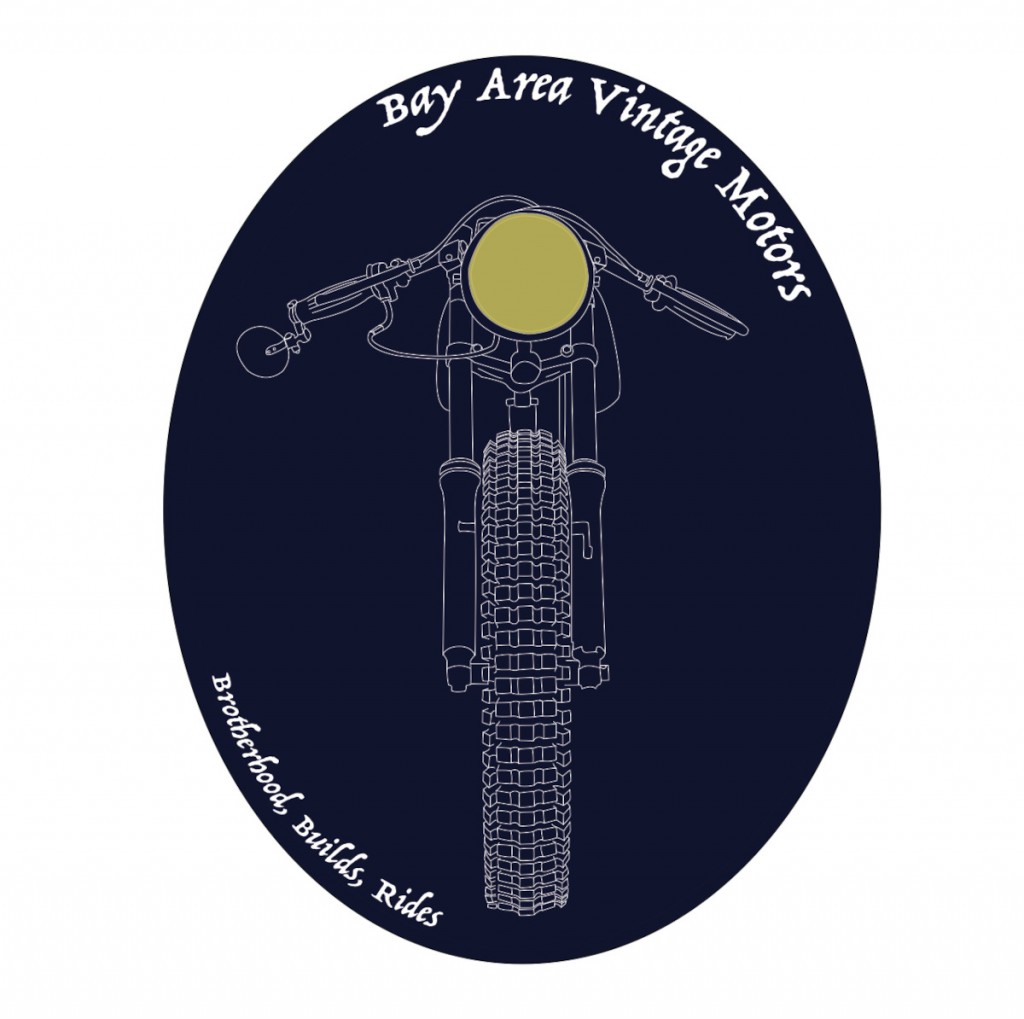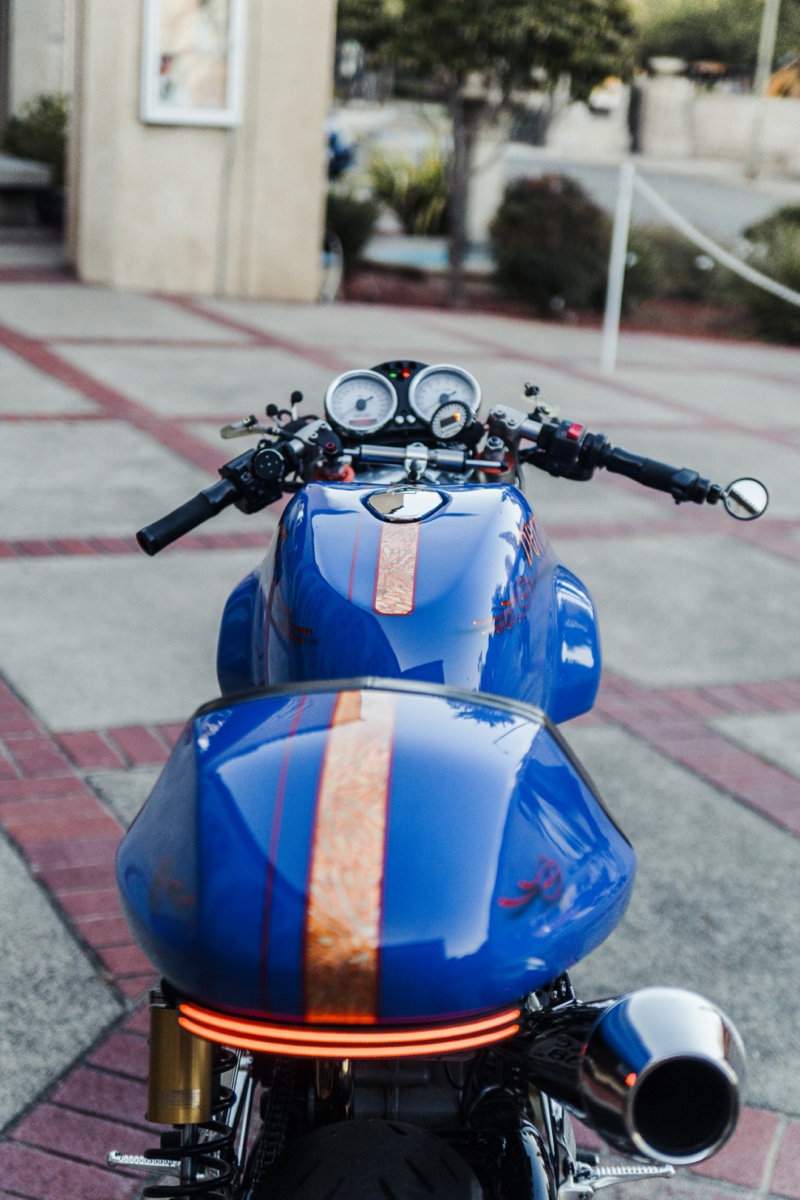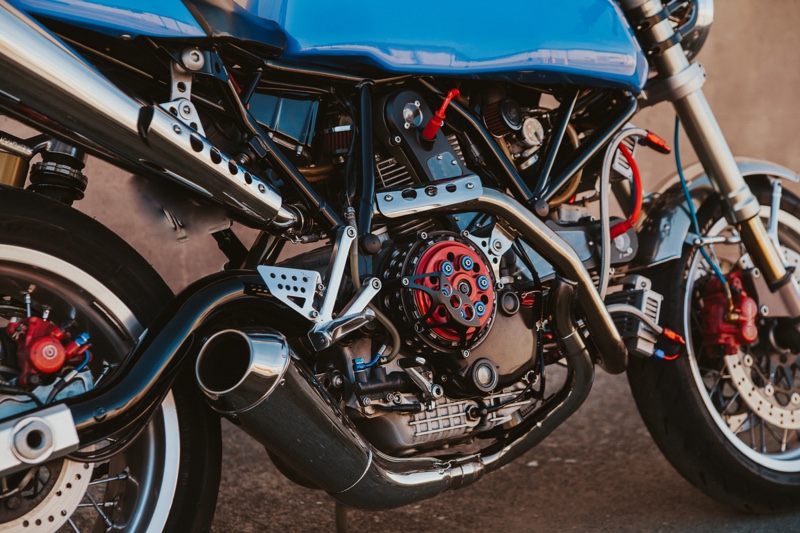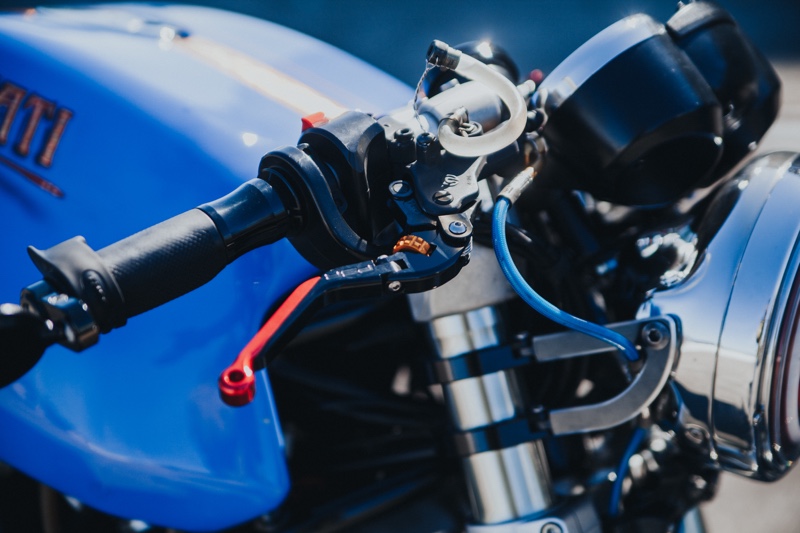In 2005, Ducati came out with their SportClassic series — a range of retro-styled machines from legendary designer Pierre Terblanche, who took inspiration from the Ducati racing bikes of yesteryear. The SportClassics machines were too far ahead of their time to fully capitalize on the retro craze, but they’ve become desirable modern classics in their own right.
The Sport 1000, available from 2006-2009, took inspiration from the 1973 Ducati 750 Sport and 750 Imola Desmo — the first Ducati L-twin (90° V-twin) bikes with desmodromic valves. It featured a 91-hp 992cc two-valve engine and trellis tube frame.

The original single-seat (monoposto) machines had an asymmetric swingarm, single shock, and dry clutch, while the later two-seat biposto had a dual-shock swingarm and wet clutch. The bikes looked incredible and went well in the twisties, though some riders yearned for even sharper performance:
“A tribute to 1960s cafe racer era boasting modern thrills and mechanicals. Great as a look-at-me motorcycle and the detailing is exquisite but it’s neither a true sportsbike nor year-round transport.” —MCN
That’s where our new friend Rodrigo Cedeño of DNA Motor Lab comes in. Formally trained as a chef, Rodrigo spent all of his free time riding and wrenching on bikes until he left the profession to pursue motorcycles full-time. Today, he owns DNA Motor Lab, a full service motorcycle shop and motorcycle tow service in Hayward, California, as well as Bay Area Vintage Motors, a custom shop/communal hub.
“All in all, I’m a lucky person to always be around motorcycles literally 24/7 — getting to pump out these builds is what I live for to this day.”
Rodrigo spent months developing a new fuel and ignition map to pair with the ZARD full exhaust, which transformed the character of the bike, he says. Brakes and suspension have been upgraded at both ends, as has the lighting, and the bike is now sporting a vented slipper clutch, a very trick pair of oil coolers, an upgraded fuel system with live wideband feedback, lots of cool transparent covers, ’70s Volvo blue paint, and more.
The result is a retro Duc that can now keep pace in the canyons with newer machinery:
“It’s been re-geared (on top of the custom map), so it has a lot of lower-end torque and power. It’s fast right off the line and pulls through the canyons very gracefully — it keeps with the bigger bikes, no problem.”
Below, we get the full story on the build from Rodrigo himself, as well as more gorgeous shots from photographer Hellena Cedeño (@hellenacedeno).
Ducati Sport 1000: Builder Interview
• Please tell us a bit about yourself, your history with motorcycles, and your workshop.
I started off on vintage bikes (maybe 10 years ago or so — our CL360 build). Most people assume I’ve been riding all my life and always was around bikes, but I didn’t find them until later. I started off my professional career as a chef — through education and experience. However, during my off time, I was always wrenching on motorcycles and after just 2-3 years I got to a point where I left my career as a chef and pursued motorcycles full time.
Long story short, I ended up building and customizing countless bikes (of all makes, years, and models) and now own and run a full service motorcycle shop & motorcycle tow service (DNA Motor Lab) and custom shop/communal hub (Bay Area Vintage Motors). All in all, I’m a lucky person to always be around motorcycles literally 24/7 — getting to pump out these builds is what I live for to this day.
• What’s the make, model, and year of the bike?
2006 Ducati Sport 1000.

• Why was this bike built?
This has always been one of my dream/visionary type of builds and ended up becoming a little bit of a never-ending canvas. This was build number three and had a very different feel than the others.
• What was the design concept and what influenced the build?
Keeping a classic look but getting the modern day (R&D) perks. The goal was to take a good platform and find different ways that we could make it better — aesthetically and performance-wise. I also wanted to create a theme of some transparency as well — being able to see many of the bike’s components in action. I’ve always been fascinated by mechanical systems and their operation.
• What custom work was done to the bike? A crazy amount of stuff –
- Full exhaust with a custom map (ZARD and R&D entirely by us).
- Custom paint job (Volvo blue from the ’70s with acid-washed gold leaf)
- Upgraded braking system (front and rear)
- Fully adjustable suspension w/steering dampening
- Custom head and tail lighting
- High flow velocity stacked air system
- Upgraded fuel pump and fuel system w/ live wideband feedback
- Vented Slipper Clutch (Ducabike and machined by us)
- Opened and machined engine covers
- Twin oil Cooled System
And many other small details.
• Does the bike have a nickname?
The Duc.
• Can you tell us what it’s like to ride this bike?
Honestly, it rides exactly as it looks. It’s been re-geared (on top of the custom map), so it has a lot of lower-end torque and power. It’s fast right off the line and pulls through the canyons very gracefully — it keeps with the bigger bikes, no problem.
• Was there anything done during this build that you are particularly proud of?
The map. I spent months developing the map that the bike has (fuel and ignition), and it changed the bike entirely. We had so much success with the map that variants of it are on other models of the Sport Classics we’ve worked on. Also! The color — I really wanted something that stood out. This Volvo blue was perfect.
Follow the Builder
Web: dnamotorlab.com | bayareavintagemotors.com
Facebook: @dnamotorlabllc
Instagram: @dnamotorlab | @ba_vintagemotors
Photography by Hellena Cedeño (@hellenacedeno)





















